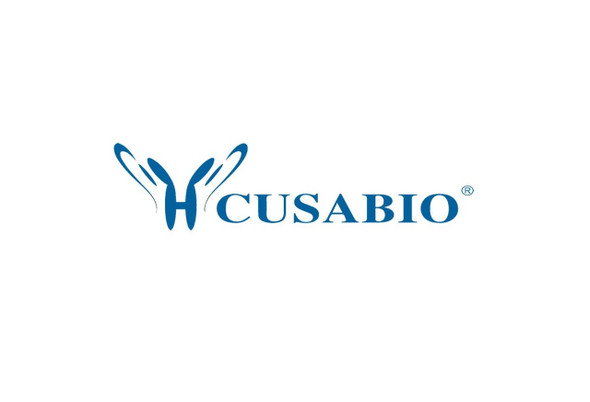Cusabio Active Proteins
Recombinant Mouse C-C motif chemokine 19 protein (Ccl19) (Active) | CSB-AP001321MO
- SKU:
- CSB-AP001321MO
- Availability:
- 5 to 10 Working Days
Description
Recombinant Mouse C-C motif chemokine 19 protein (Ccl19) (Active) | CSB-AP001321MO | Cusabio
Protein Description: Full Length of Mature Protein
Alternative Name (s) : Epstein-Barr virus-induced molecule 1 ligand chemokine, ELC, Small-inducible cytokine A19
Gene Names: Ccl19,Elc,Scya19
Research Areas: Immunology
Species: Mus musculus (Mouse)
Source: E.Coli
Tag Info: Tag-Free
Expression Region: 26-108aa
Sequence Info: GANDAEDCCL SVTQRPIPGN IVKAFRYLLN EDGCRVPAVV FTTLRGYQLC APPDQPWVDR IIRRLKKSSA KNKGNSTRRS PVS
Biological Activity: Fully biologically active when compared to standard. The biological activity determined by a chemotaxis bioassay using human mature dendritic cells is in a concentration range of 10-100 ng/ml.
MW: 9.2 kDa
Purity: >97% as determined by SDS-PAGE and HPLC.
Endotoxin: Less than 1.0 EU/µg as determined by LAL method.
Relevance: Strongly chemotactic for naive (L-selectinhi) CD4 T-cells and for CD8 T-cells and weakly attractive for resting B-cells and memory (L-selectinlo) CD4 T-cells. May play a role in promoting encounters between recirculating T-cells and dendritic cells and in the migration of activated B-cells into the T-zone of secondary lymphoid tissues. Binds to chemokine receptor CCR7. Binds to atypical chemokine receptor ACKR4 and mediates the recruitment of beta-arrestin (ARRB1/2) to ACKR4.
PubMed ID: 9653094; 15489334
Notes: Repeated freezing and thawing is not recommended. Store working aliquots at 4℃ for up to one week.
Function: Strongly chemotactic for naive (L-selectinhi) CD4 T-cells and for CD8 T-cells and weakly attractive for resting B-cells and memory (L-selectinlo) CD4 T-cells. May play a role in promoting encounters between recirculating T-cells and dendritic cells and in the migration of activated B-cells into the T-zone of secondary lymphoid tissues. Binds to chemokine receptor CCR7. Binds to atypical chemokine receptor ACKR4 and mediates the recruitment of beta-arrestin (ARRB1/2) to ACKR4.
Involvement in disease:
Subcellular Location: Secreted
Protein Families: Intercrine beta (chemokine CC) family
Tissue Specificity: Highly expressed by dendritic cells in mesenteric and peripheral lymph nodes. Significant expression in spleen (T cell zone or periarteriolar lymphatic sheath) and Peyer patches. Low expression in thymus.
Paythway:
Form: Lyophilized powder
Buffer: Lyophilized from a 0.2 µm filtered PBS, pH 7.4
Reconstitution: We recommend that this vial be briefly centrifuged prior to opening to bring the contents to the bottom. Please reconstitute protein in deionized sterile water to a concentration of 0.1-1.0 mg/mL.We recommend to add 5-50% of glycerol (final concentration) and aliquot for long-term storage at -20℃/-80℃. Our default final concentration of glycerol is 50%. Customers could use it as reference.
Uniprot ID: O70460
Uniprot Entry Name: CCL19_MOUSE
HGNC Database Link: N/A
UniGene Database Link: UniGene
KEGG Database Link: KEGG
STRING Database Link: STRING
OMIM Database Link: N/A









